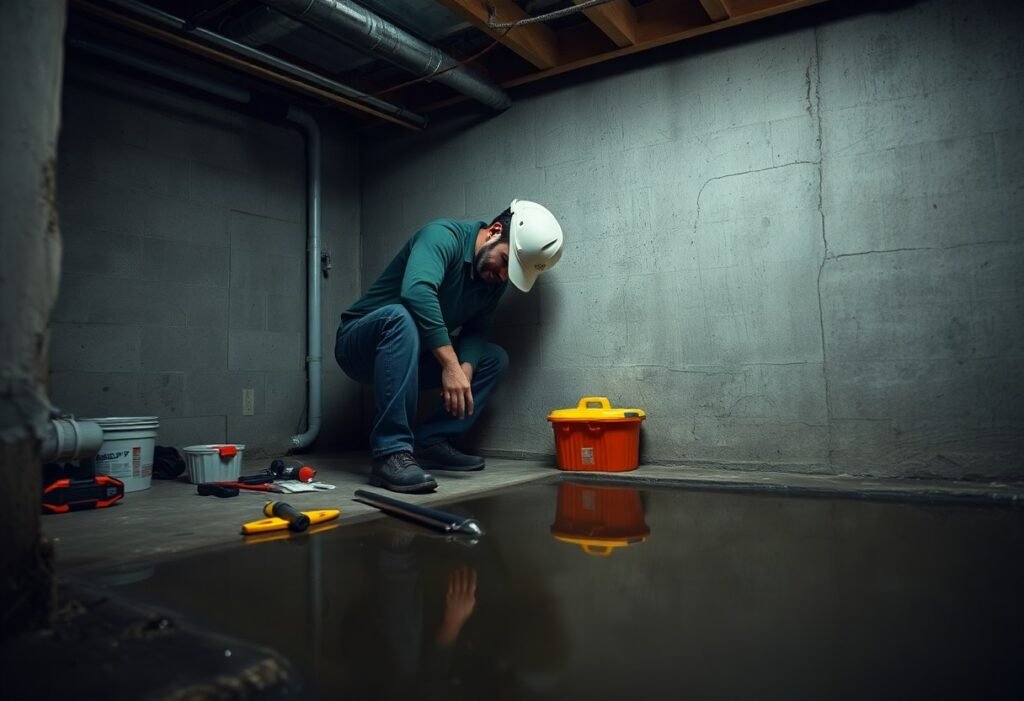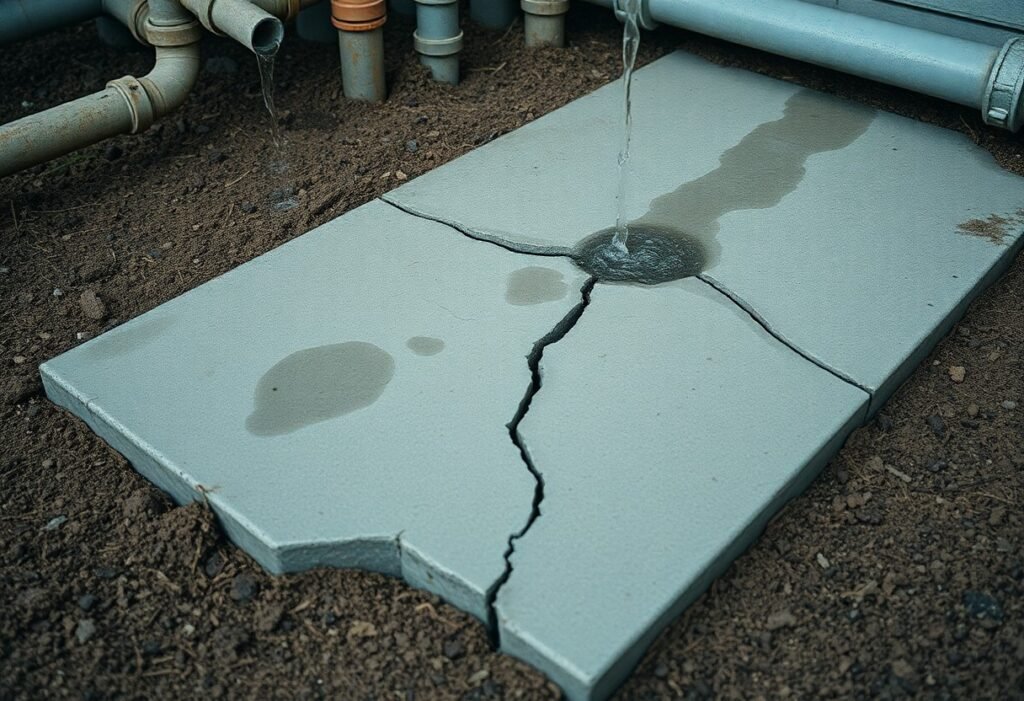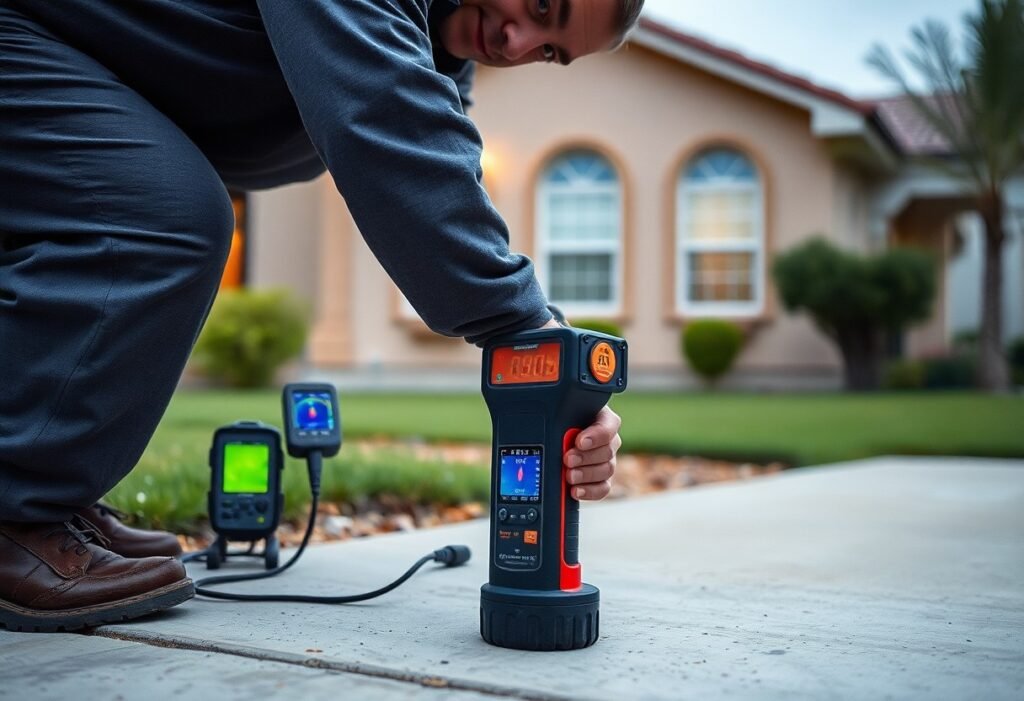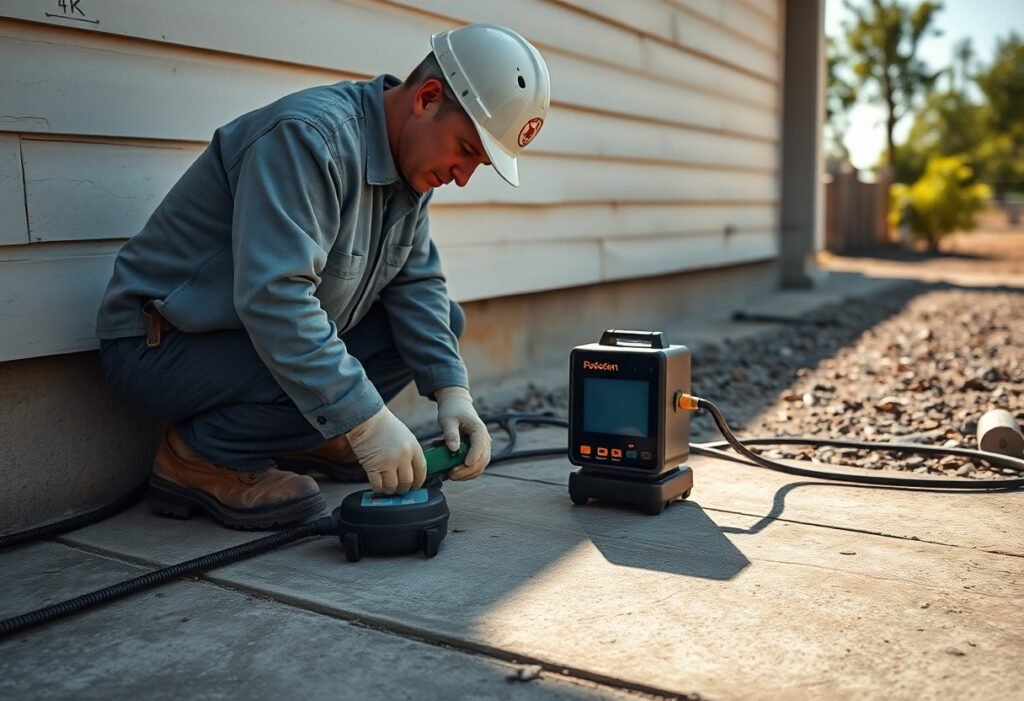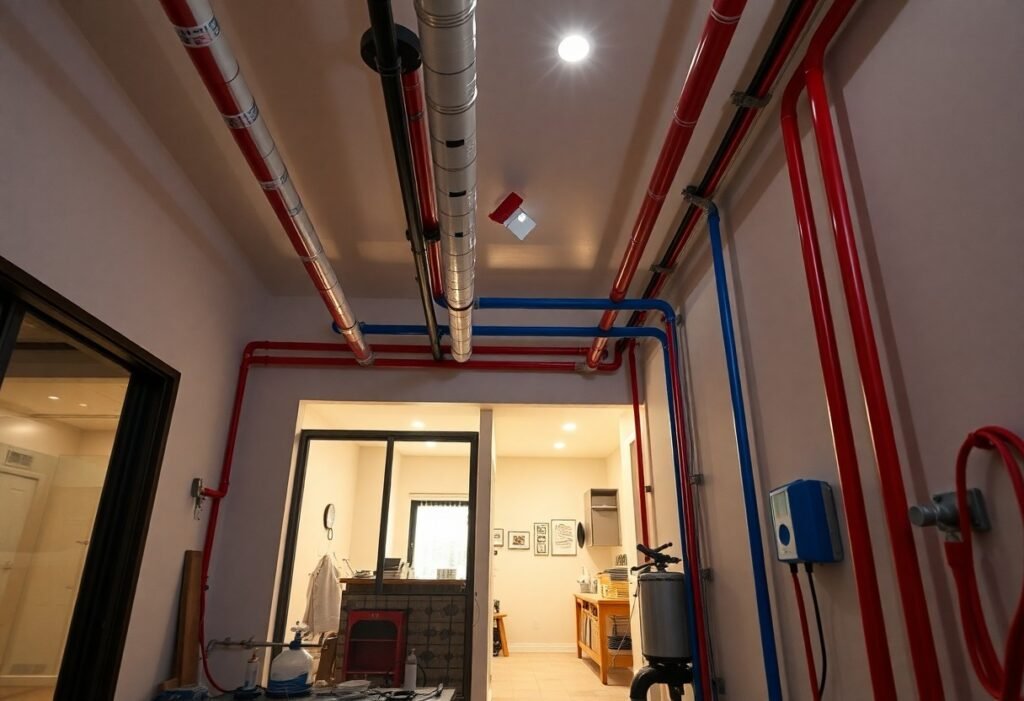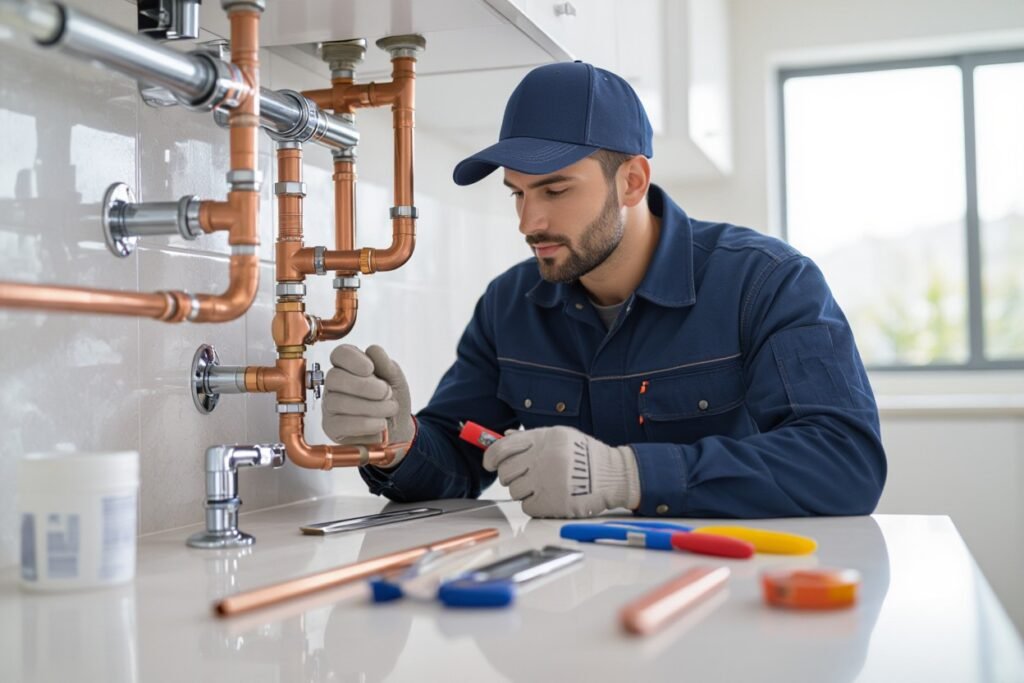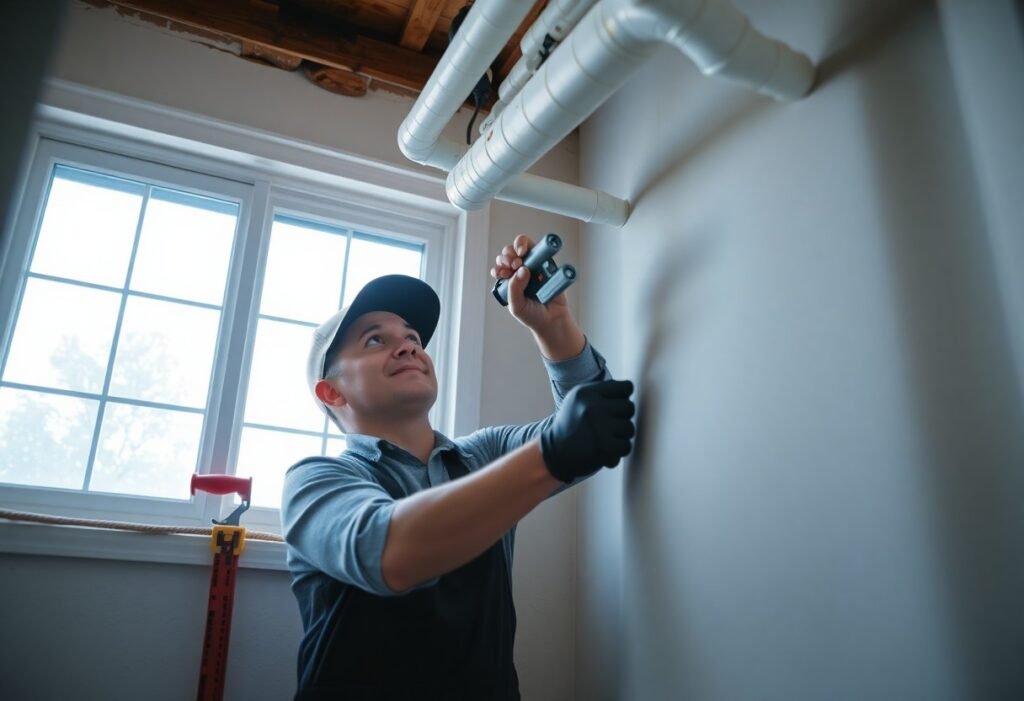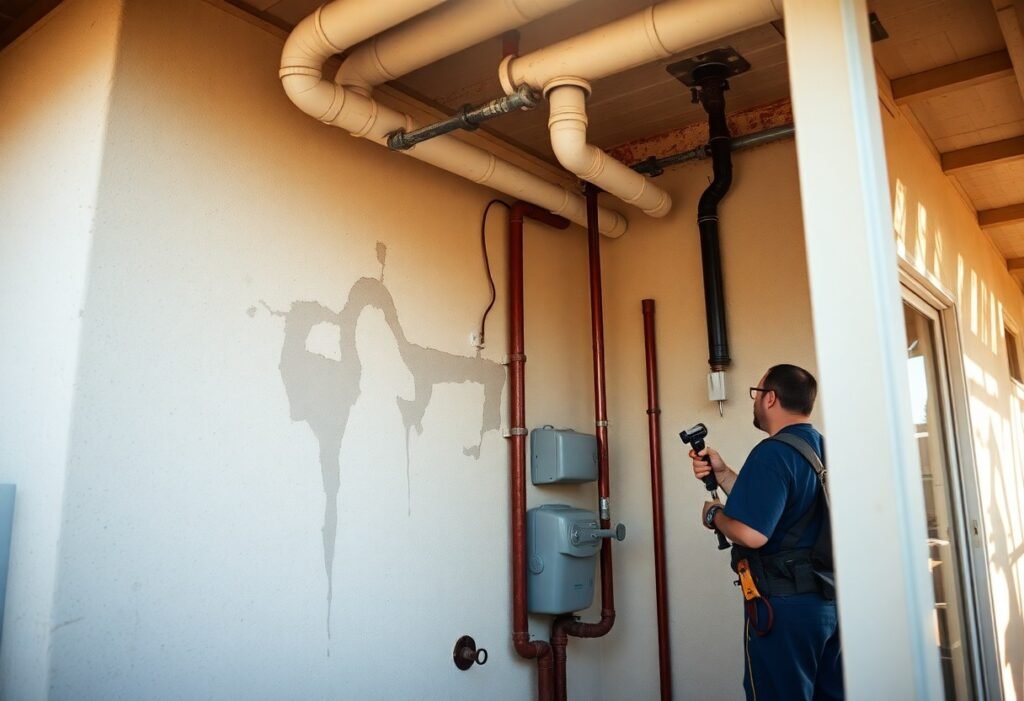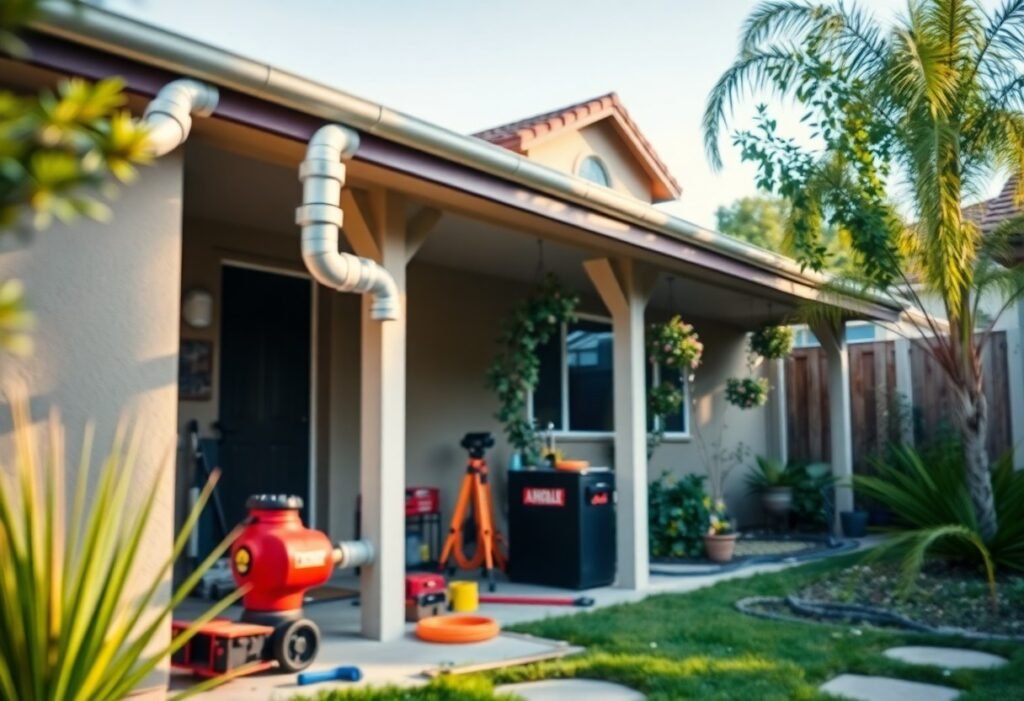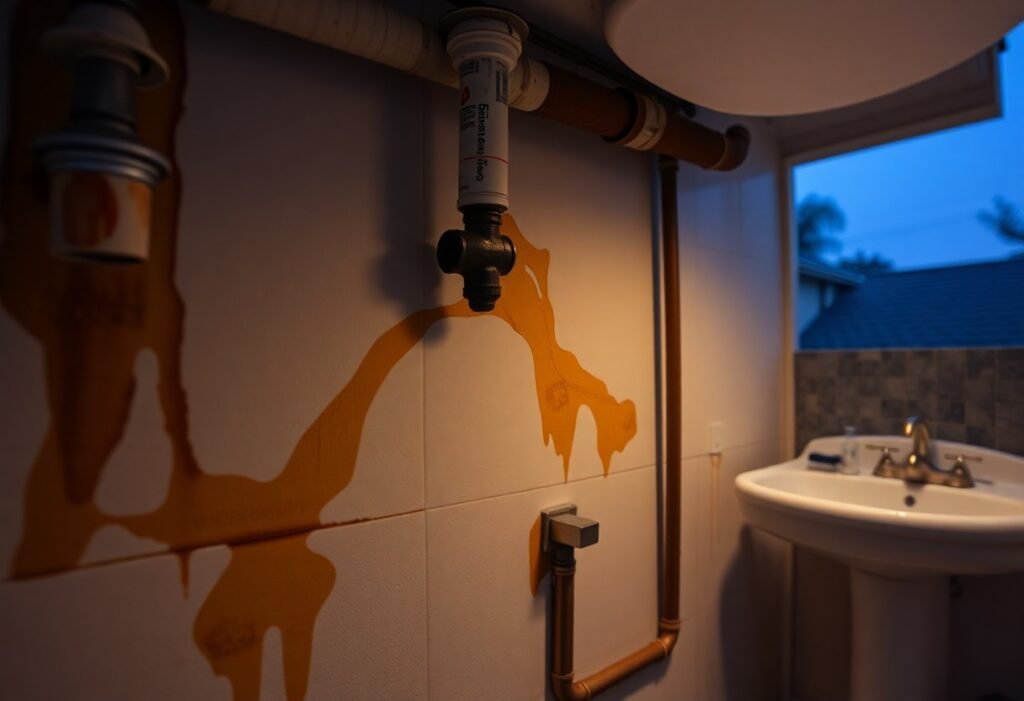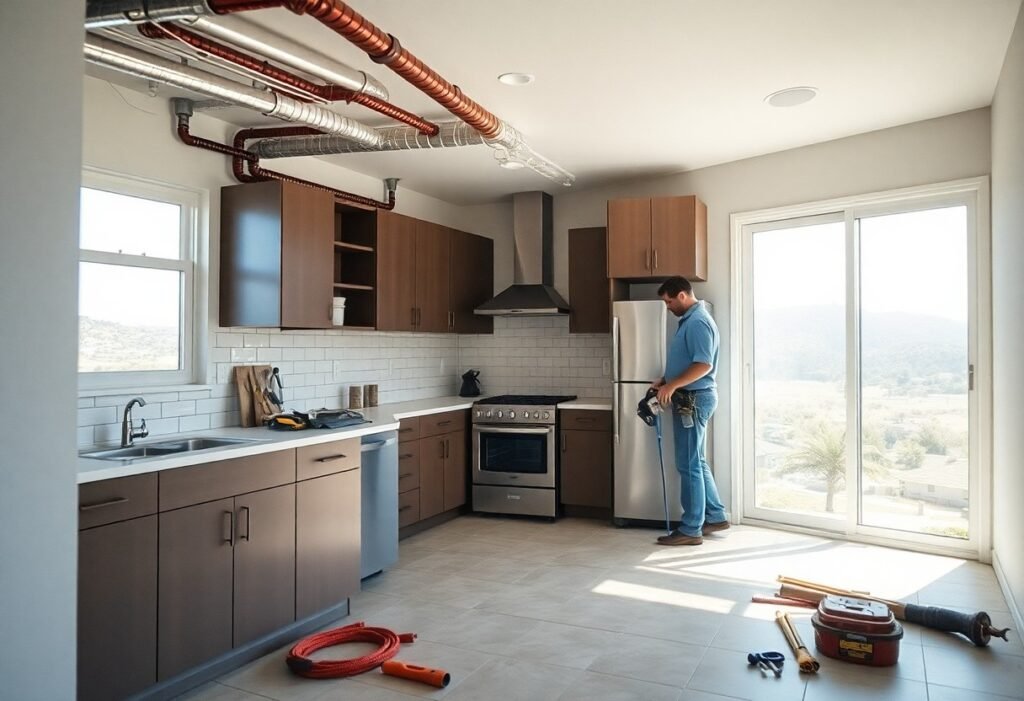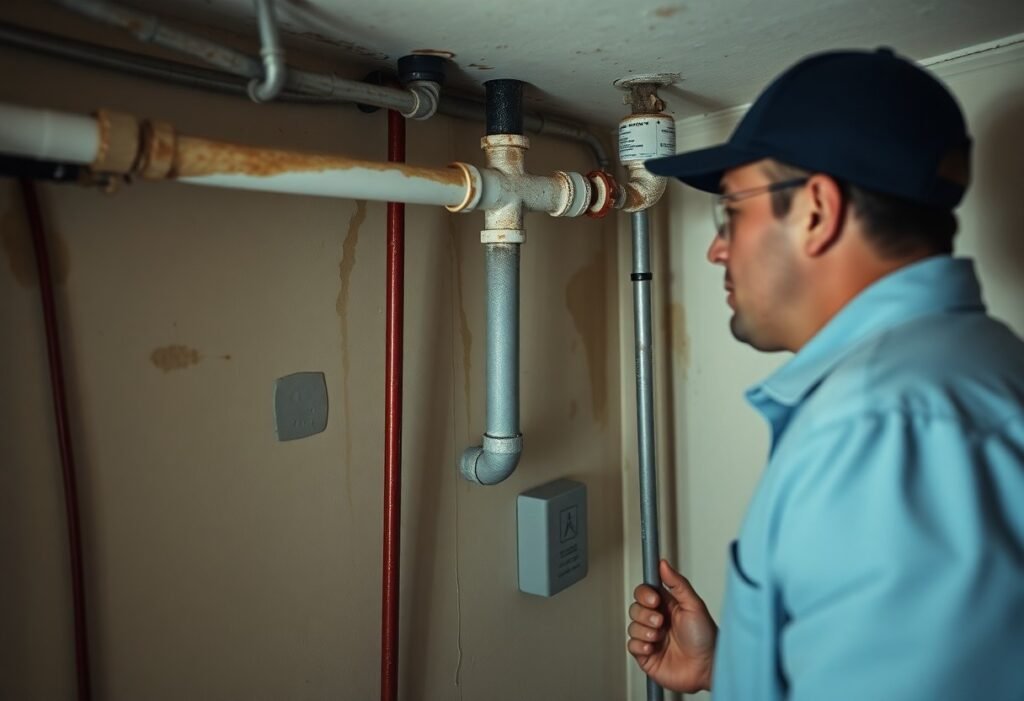Is it Time to Repipe? Whole House Repiping in Brea, California
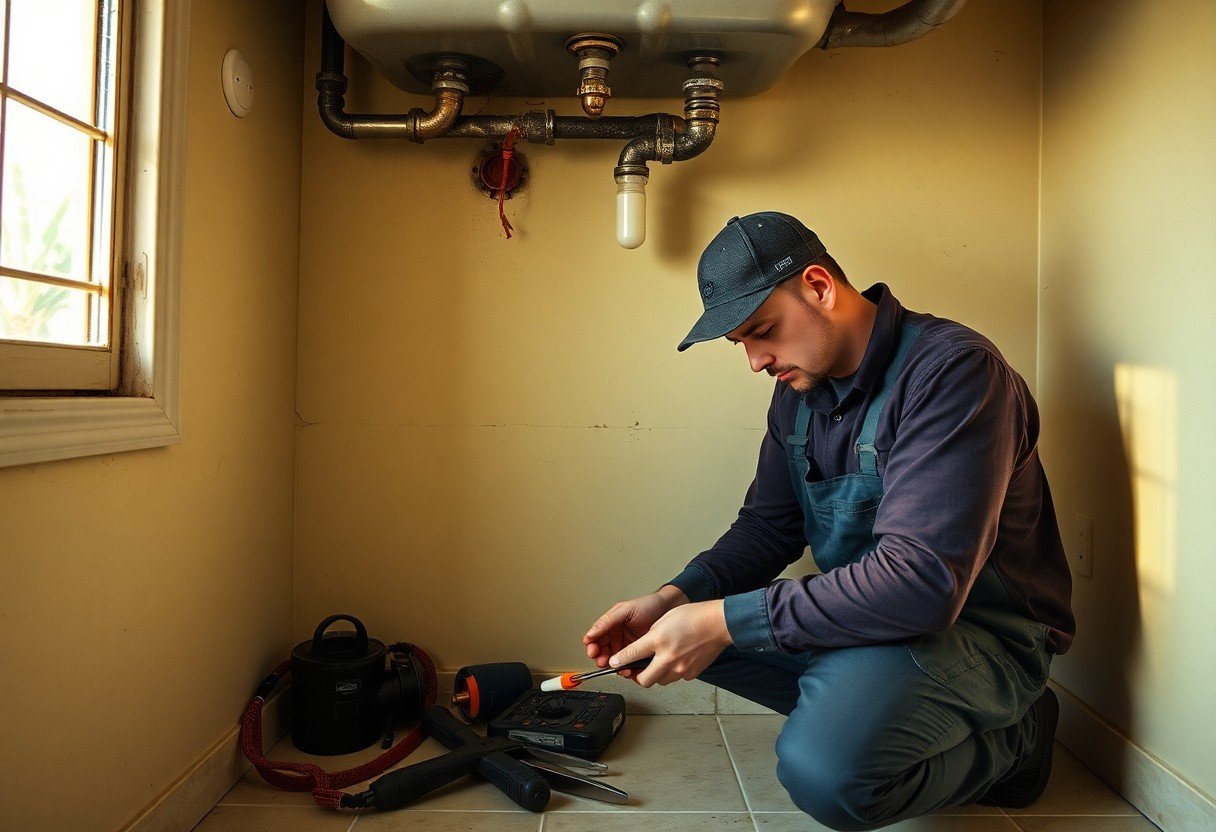
There’s a good chance you might be wondering if your plumbing system is due for an upgrade. If you’re experiencing frequent leaks, low water pressure, or discolored water, it may be time to consider whole house repiping. This process can protect your home from potential water damage and improve the quality of your drinking water. In this post, we will guide you through the signs that indicate it’s time to repipe and what you can expect from this important home improvement.
Key Takeaways:
- Whole house repiping may be necessary for homes with outdated or damaged plumbing systems, which can lead to leaks and reduced water quality.
- Signs indicating the need for repiping include low water pressure, frequent plumbing repairs, discolored water, and the presence of corrosion in pipes.
- Consulting a professional plumber in Brea can provide an assessment of your plumbing needs and determine the best materials and methods for repiping your home.
The Telltale Signs Your Pipes Are Past Their Prime
Recognizing the signs that your pipes may be in need of attention can save you from larger issues down the road. As plumbing systems age, they often manifest symptoms that indicate it’s time for a full repiping. Be on the lookout for clues such as leaks, discoloration in water, or sounds you probably haven’t heard before. Let’s examine some of the most alarming signs that point towards the need for repiping your home in Brea.
Frequent Leaks and Water Damage
If you find yourself dealing with frequent leaks or constant water damage around your home, it’s a strong indication that your pipes may be deteriorating. These leaks not only lead to increased water bills but can also cause serious property damage over time. Look for signs like water stains on ceilings and walls, or the presence of mold, which suggests that your plumbing system isn’t functioning properly.
Rusty or Discolored Water
Rusty or discolored water coming from your faucets is a serious concern and a prime indicator of pipe deterioration. If you notice a brownish tint or a metallic taste when you turn on the water, your pipes could be corroding. This discoloration usually indicates the presence of iron, suggesting that your plumbing system may be made of metal pipes that are falling apart.
In homes with older plumbing systems, especially those built before the 1980s, galvanized steel pipes are common. These pipes can oxidize over time, leading to rust and affecting the quality of your water. Aside from aesthetic issues, drinking rusty water can pose potential health risks, making it imperative to address this problem swiftly. If you see these signs, it’s wise to consult with a plumbing expert in Brea to evaluate your situation and explore your repiping options.
The Cost of Ignoring Pipe Replacement
Neglecting to replace aging pipes can lead to serious consequences that extend beyond mere inconvenience. Your home could suffer significant water damage, resulting in costly repairs and potential health hazards from mold growth. When you ignore pipe replacement, you also set yourself up for increased utility bills due to leaks and inefficiencies. Delaying an crucial update may seem financially manageable at first, but the long-term implications can impact your wallet and your property value considerably.
Financial Implications of Water Damage
Water damage can wreak havoc on your home and finances. An average homeowner spends between $2,000 to $10,000 on water damage repairs, depending on the severity and location. Delay in pipe replacement might lead to structural damage, requiring even more extensive repairs and renovations that could escalate the cost significantly. Insurance may cover some damage, but if you’re found negligent in your maintenance, your claims could be denied.
Long-term Savings from Modern Piping
Investing in modern piping materials pays off in the long run. Newer systems, like PEX or copper pipes, tend to last longer and perform better compared to older galvanized or lead pipes. A modern repiping project not only ensures better water flow and quality but can also lead to lower monthly utility bills. By switching to energy-efficient systems, you can potentially save up to 30% on your water bills over the years, resulting in substantial savings that offset the initial repiping costs.
For instance, homes that have undergone whole-house repiping have reported improved water pressure and fewer plumbing emergencies. By upgrading to modern materials, you invest in a reliable plumbing system that requires less maintenance and fewer repairs. Additionally, these materials often come with extended warranties, ensuring long-lasting peace of mind. This proactive approach turns your plumbing from a potential liability into an asset that enhances your property value significantly.
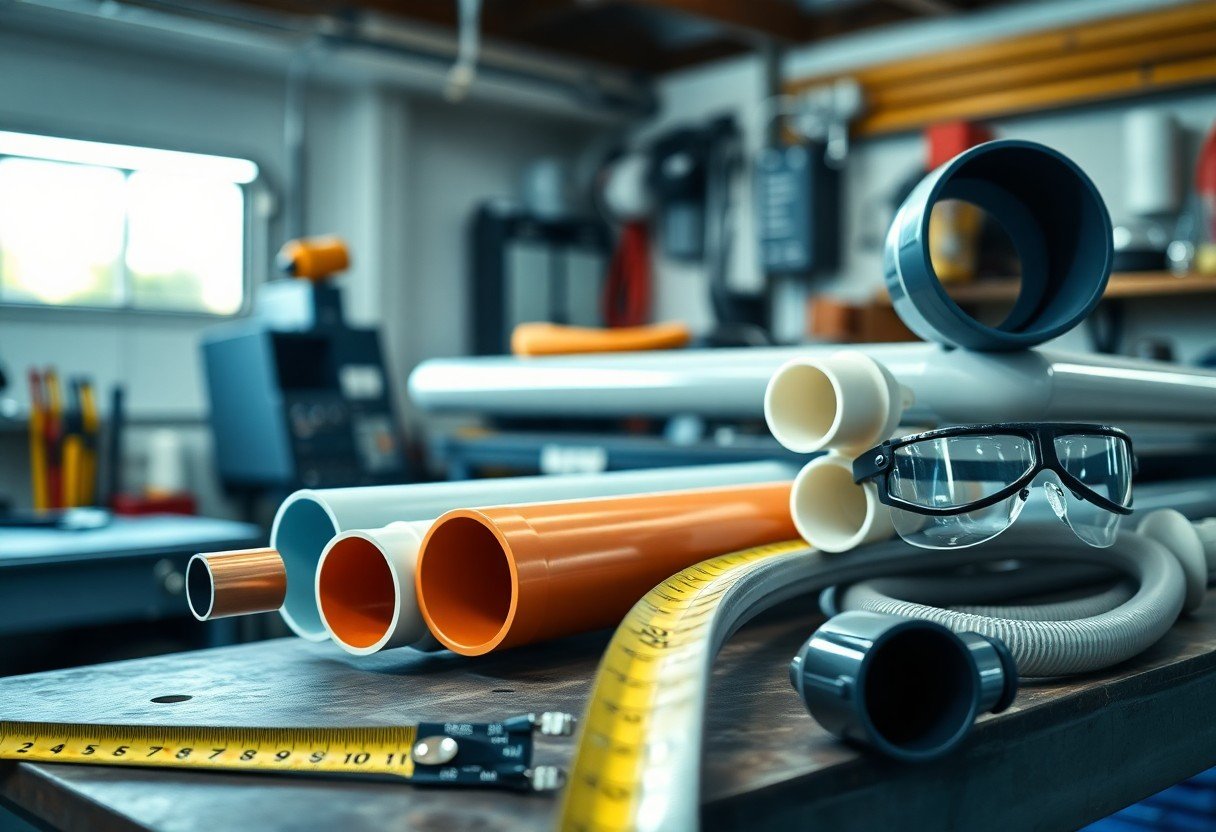
Materials That Make a Difference: Choosing the Right Pipe
Selecting the proper material for your repiping project is important for long-term durability and performance. Different materials have unique characteristics that can affect your plumbing system’s efficiency, costs, and overall functionality. Understanding your options will empower you to make a choice that not only fits your budget but also meets your specific needs for your home in Brea.
Copper vs. PVC: The Pros and Cons
Pros and Cons of Copper vs. PVC
| Copper | PVC |
|---|---|
| Long lifespan (50+ years) | Cost-effective and affordable |
| Resistant to corrosion | Lightweight and easy to install |
| Great for high-pressure systems | Good for waste lines and drainage |
| Less likely to leach chemicals | Can expand and contract without cracking |
| Higher initial cost | Not suitable for drinking water in all areas |
| Requires skilled labor for installation | Limited temperature resistance |
| Can freeze in extremely low temperatures | Durable against low-impact damage |
| May require additional insulation | Can degrade in sunlight if exposed |
| Sustainable and recyclable | Non-corrosive nature |
| High resale value | Good flow characteristics |
Understanding the Benefits of PEX
PEX has surged in popularity over the years as a favored choice for residential repiping projects. Its flexibility allows for a more straightforward installation process and reduces the need for fittings, which can mean fewer potential leak points. Additionally, PEX is resistant to scale and chlorine, ensuring clean and efficient water delivery. It can also expand to prevent bursting in freezing conditions, making it a reliable choice for varying climates like those in California.
Besides these practical advantages, PEX is also highly affordable compared to traditional materials like copper. It offers an excellent balance between quality and cost, making it perfect for homeowners seeking budget-friendly, yet durable solutions. The installation process is quick, helping you save on labor costs while ensuring a streamlined transition to a more efficient plumbing system. With the combination of resilience, adaptability, and affordability, PEX continues to stand out as a leading option for whole house repiping in Brea, California.
The Repiping Process: What Homeowners Can Expect
The entire repiping process can feel daunting, but understanding it makes things easier. Initially, a thorough inspection of your home’s plumbing is conducted to assess the extent of the problems. Once a plan is in place, the actual repiping involves replacing old, damaged pipes with new ones, a task typically completed within a few days. For comprehensive insights into this process, check out What Is Involved In Repiping A House?.
Timeline and Disruption of Daily Life
Expect the entire project to take about three to five days, depending on your home’s size and plumbing complexity. During this period, disruptions to your daily routines are likely. Water service may be temporarily interrupted, and your access to certain areas of your home might be limited, especially if the work is being done in multiple locations simultaneously.
Hiring the Right Professional Plumber
Selecting the right plumber is a game changer in ensuring a smooth repiping process. Look for licensed professionals with extensive experience in repiping, particularly in older homes like those found in Brea. Reviews and referrals can help you find a plumbing contractor who not only understands the technical aspects but also prioritizes customer service and communication throughout the project.
As you navigate your options, assess each plumber’s qualifications thoroughly. Request estimates from multiple contractors and inquire about their experience specifically with repiping jobs. A reputable plumber will provide clear timelines and detailed explanations about the process, as well as guarantee their work. An investment in a skilled plumber now can save time, money, and headaches down the road, resulting in a positive, stress-free repiping experience.
Local Considerations: Unique Factors for Brea Homeowners
Understanding the local dynamics can greatly influence your decision to proceed with whole house repiping in Brea. Key factors include the age of your home, the specific neighborhood characteristics, and common plumbing materials used in the area. Local climate conditions, particularly humidity levels and temperature fluctuations, also play a role in pipeline wear and tear. Engaging with local contractors familiar with these aspects ensures that you receive tailored, expert advice. After evaluating these elements, you can make a well-informed decision about your plumbing system needs.
- Age of your home
- Neighborhood plumbing trends
- Climate impacts
- Local codes
Climate Impact on Plumbing Systems
The Mediterranean climate of Brea affects plumbing systems significantly. Hot, dry summers and mild winters can lead to expansion and contraction in pipes, potentially causing stress fractures and leaks. It’s vital to choose materials that can withstand these temperature shifts to avoid costly damage in the future.
Local Building Codes and Regulations
Brea homeowners must adhere to specific building codes to ensure plumbing upgrades meet safety and efficiency standards. These regulations dictate acceptable materials, installation practices, and inspection processes, all imperative for maintaining your home’s integrity and value.
Local building codes are designed to protect homeowners from substandard construction and plumbing practices. For example, Brea may have protocols regarding the types of pipes that can be used, as well as installation techniques that minimize risks and enhance durability. Familiarizing yourself with these regulations, and working with licensed professionals who are aware of city-specific requirements, can save you from future headaches, including unexpected inspections or the need for renovations to comply with current standards. Navigating these regulations successfully means your repiping project can be completed smoothly and safely, preserving your investment for years to come.
Summing up
With these considerations, determining whether it’s time for whole house repiping in Brea, California, ultimately hinges on the condition of your current plumbing system and your long-term plans for your home. If you experience frequent leaks, low water pressure, or corroded pipes, it may be wise to invest in repiping for enhanced performance and safety. By upgrading your piping, you can improve water quality and reduce maintenance costs in the future, ensuring a more reliable plumbing system for years to come.
FAQ
Q: What are the signs that indicate it may be time to repipe my home in Brea, California?
A: There are several indicators that suggest your home may need repiping. Look for persistent leaks, especially if they are happening in multiple areas or if they often reoccur after repairs. Additionally, discolored or rusty water can signal corroded pipes. Low water pressure throughout the house can also be a sign of significant plumbing issues. If you notice any of these symptoms, it may be time to consider repiping your home.
Q: What materials are commonly used for repiping, and which is the best option for my home?
A: The most common materials used for repiping include copper, PEX (cross-linked polyethylene), and PVC (polyvinyl chloride). Copper pipes are durable and long-lasting but can be more expensive. PEX is flexible, resistant to corrosion, and generally more cost-effective, making it a popular choice for homeowners. PVC is often used for drainage and waste but is not suitable for drinking water supply. The best option for your home depends on your specific plumbing needs and budget. Consulting with a plumbing expert in Brea can help you make the right choice.
Q: How long does the repiping process typically take and what can I expect during the installation?
A: The duration of the repiping process varies based on the size of your home and the complexity of the plumbing system. Generally, a complete repipe can take anywhere from a few days to a week. During installation, some areas of your walls may be opened up to access the existing pipes. Plumbers will work to minimize disruption to your daily routine, but there may be periods where water service is temporarily unavailable. It’s advisable to communicate with your plumbing team to understand the specific timeline and any preparations needed on your part.

